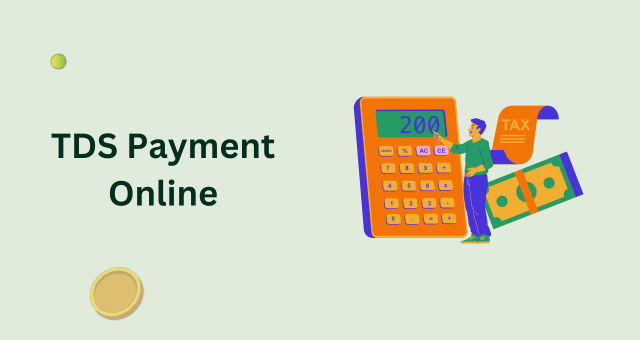TDS Payment Made Simple: Expert Advice for Smooth Transactions
Every taxpayer under the IT Act must pay TDS at a prescribed rate. It is the primary source of government revenue for the Central Board of Direct Taxes. An individual or entity should deduct a pre-determined percentage of TDS before paying salaries, interests, contractors, services, etc. After deduction, the deductor must deposit the amount with the government within the due date. While offline TDS payment used to be a nightmare for taxpayers, the e-filing of income tax returns has made the process much faster and effortless.
In the following sections, you will learn how to make a TDS payment online and find expert advice for smooth transactions.
Pay the TDS Online
Online TDS payment is completely secure, easier, and faster. You may enjoy several benefits by paying the TDS online, including the following:
- Saves money and time
- Avoids trouble maintaining tangible and physical records
- No chance of errors like illegible handwriting and overwriting
- Immediate payment confirmation
- Facility to pay the TDS any time, 24/7
- Payment accessibility from anywhere
- Fast retrieval of records
- Faster processing
- High-end security
Know the Right Method to Pay the TDS Online
The first step is to prepare all TDS-related details, including heads of deductions, tax amounts for various individuals or companies, financial year and assessment year, PAN details, and TAN details. Now, follow these steps to pay the TDS correctly:
- Open the website and log in using your username and password.
- From the Challans page, choose TDS Challan 281 for individuals and business companies.
- Fill out the challan ITNS 281 form.
- Select the appropriate section for the taxpayer’s individual or company details.
- Choose the payment type.
- Choose the nature of the payment, like TDS on salary, etc.
- Select the payment mode from net banking or debit card.
- Enter your TAN details.
- Provide assessment year details.
- Enter your contact and address details.
- Type the captcha code and click proceed.
- On the confirmation page, check the details and click proceed to reach the payments page.
- Enter your payment details to complete the payment.
Points to Remember When E-Filing of Income Tax Return and TDS Payment
Here are a few points to remember when e-filing income tax return and making TDS payments:
- Ensure that the TDS is deposited on time to avoid extra charges and last-minute hassles.
- Double-check the assessment year and TAN when depositing the challan.
- Always enter the correct PAN and Aadhaar details of the deductee.
- Provide the correct CIN/BIN in the TDS statement.
- Enter the correct receipt number when filing the ITR.
- Make sure to issue the Form 16 for the Financial Year on or before 15th June.
- Separate challans are necessary for various tax types like self-assessment tax, advance tax, etc.
For an employee with more than one employer in a financial year, one must consider the following:
- Each employer should issue a separate Form 16 (Part A) for their period in the company.
- The current employer or both should issue Part B on Form 16 per the employee’s choice.
- Download the latest TDS statement utilities for the quarter from the TIN NSDL website to prepare the statement.
Mistakes to Avoid When E-Filing of Income Tax Returns and TDS Payment
- Never share your login details with any unauthorised individual.
- Do not report PAN details in the return without receiving a PAN card.
- Remember to enter the correct TDS amount without rounding off, as the TDS-CPC system does not allow that.
- Refrain from concluding and reporting the employees’ deductions, rebates, and savings without demanding proof from them.
- A single challan to deposit TDS under different sections is not possible.
- When selecting one in the challan, distinguish the assessment year from the financial year.
Conclusion
Using the income tax portal to make TDS payments is very helpful. Compared to the manual system, it is cost-effective, less labour-intensive, and less time-consuming. Understanding the clauses and following this expert advice will prove beneficial. Most importantly, pay your TDS on time to save time and effort and avoid the hassles of physical payment.

